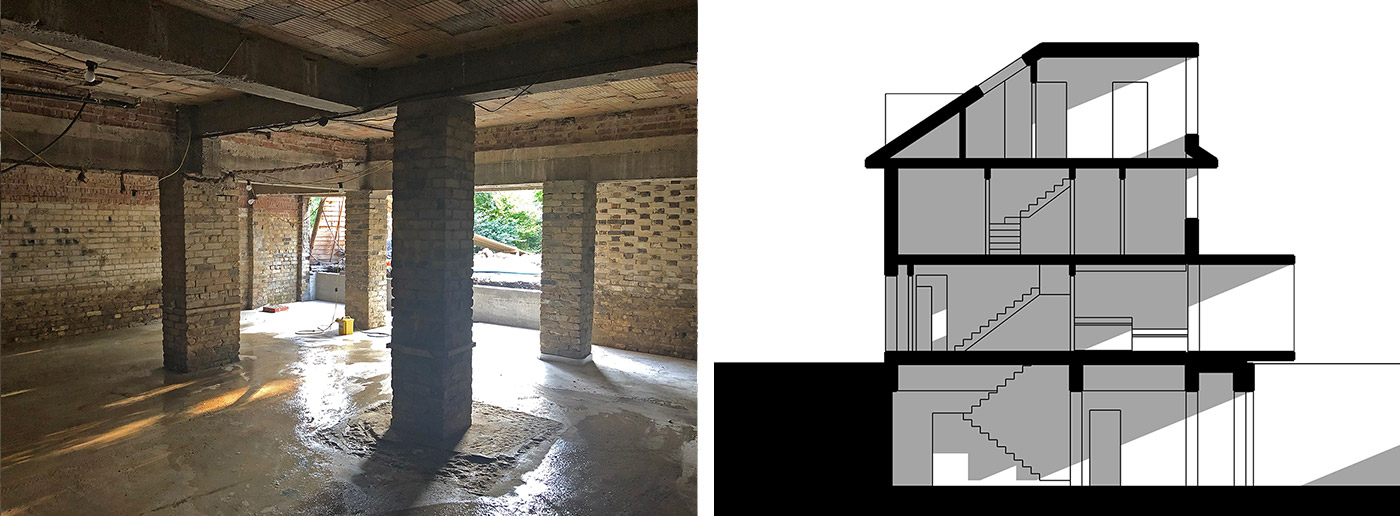Carbon gains : first Cemfree basement slab
The basement slab is 13 cubic metres in volume. For this amount, compared with Portland cement concrete, using Cemfree can result in a reduction between 988 kg CO2 (CEM III/A) or 2,400 kg CO2 (CEM I). A small step towards overall carbon reduction perhaps, but it’s an excellent test case for the use of cement-free concrete in small-scale situations (such as residential refurbishments) for our client, Kevin Gray, founding director of Gray Architecture and Design: “It’s an R&D project for me as an architect, and I’m now feeling more confident in its use”, he says.

photo and section : courtesy Kevin Gray
Cemfree is a propriety product developed in the UK by DB Group. It’s an alkali activated binder, principally composed of GGBS (ground granulated blast furnace slag) combined with DB Group’s patented activator. GGBS is a byproduct of the steel industry and is commonly used as a partial cement substitute. The embodied carbon in GGBS has been included in the calculated carbon figures for Cemfree.
The use of GGBS may not be a long term solution for reaching carbon reduction targets but it’s what we have at the moment. The production of Portland cement involves processes that emit carbon dioxide, not only through energy production (which could be decarbonised) but also as an inherent part of the chemical processes involved. Because of this, decarbonising concrete requires substituting cement with suitable replacements. As mentioned, GGBS is a byproduct of steel manufacture, and the blast furnaces that produce GGBS also inherently produce carbon dioxide. In addition, current global GGBS production would satisfy only approximately one third of total cement demand. The use of GGBS is playing a vital role in reducing emissions while the industry develops genuinely carbon-neutral replacements for cement. However, it is not a long term solution for meeting carbon-reduction targets.
For the basement pour in Sydenham, Whitby Wood associate director, Chris Bell, worked with DB Group to help ready-mix supplier Hanson get the standard mix equivalent correct in terms of strength and performance. He says: “One of the advantages is the fluid nature of the mix. It’s self-compacting and the installers said it was good to work with. However, the curing time is longer”.
We are providing structural and civil engineering services for the alterations to the house, which is on a sloping site. Excavation to the existing building’s footprint has enlarged the lower-level usable area. Kevin Gray plans a series of carbon-saving measures, including the installation of an air-source heat pump.
More on DB Group and Cemfree : dbgholdings.com
Gray Architecture and Design : www.wearegray.uk

